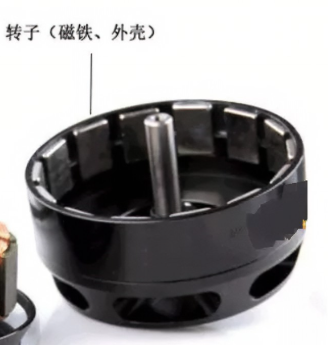What are the common sensor failures and their solutions for brushless motor motor manual six-station external winding machine?
1、Position sensor failure
Fault phenomenon:
Inaccurate detection of rotor position. The main function of the position sensor is to detect the position of the rotor in the transmission process, and when it fails, it may lead to a shift in the feeding position of the rotor, affecting the accuracy of the subsequent machining process. For example, the rotor may not be able to accurately reach the predetermined loading position, or it may be misaligned during the loading process, which may result in the equipment not being able to properly complete the loading operation.
Loss of position signal. The sensor may suddenly stop sending position signals, making the equipment unable to know the position information of the rotor, leading to the suspension of the entire feeding machine or abnormal movements, affecting the continuity of production.
Solution:
First, check the connection wiring of the position sensor. Loose wiring, poor contact or damage may lead to abnormal signals, use a multimeter to check the conductivity of the wiring, and reconnect or replace the loose or damaged wiring.
Clean the sensing head and detection surface of the position sensor. Dust, oil and other impurities may block the sensing area of the sensor and affect its normal operation, use a clean, dust-free cloth and appropriate detergent to wipe the sensor surface to ensure that it can sense properly.
Calibrate the position sensor. Due to long-term use or external impact, the calibration of the sensor may be off. It can be recalibrated according to the device's operating manual to restore its accurate position detection function. If the sensor is damaged beyond repair, it is necessary to replace the same type of position sensor to ensure that the installation position and parameter settings are correct.

2, counting sensor failure
Fault phenomenon:
Rotor counting error. Counting sensor is used to count the number of rotors on the material, when there is a failure, there will be inaccurate counting, may be overcounted or omitted to count the rotors, resulting in confusion in the production data and material management difficulties.
No counting signal output from the counting sensor. It may be that the sensor itself is faulty, or the characteristics of the detected rotor do not meet the detection conditions of the sensor, so that the equipment can not receive the counting signal, affecting the production progress and production statistics.
Solution:
Check the settings and parameters of the counting sensor. Ensure that the detection sensitivity and counting method of the sensor and other parameters match the characteristics of the rotor, and adjust the parameters of the sensor according to the characteristics of the rotor's shape, size and material so that it can count accurately.
Perform a check of the power supply to the counting sensor. Unstable or missing power supply may cause the sensor not to work properly, check the power line, power module, etc., to ensure that the power supply to the sensor is normal.
Check the optical or mechanical parts of the sensor. For optical counting sensors, clean their lenses and check whether the light-emitting and receiving elements are normal; for mechanical counting sensors, check whether their trigger mechanism is flexible and reliable. If the sensor is damaged, you need to replace the new counting sensor, and debugging and testing.
3, close to the sensor failure
Failure phenomenon:
The proximity sensor cannot properly detect the approach or departure of the rotor. In some feeding machine, the proximity sensor is used to determine whether the rotor is close to the key components, the failure may result in the equipment can not start the corresponding operation, such as the inability to start the feeding action or stop the feeding action.
Proximity sensor malfunction. It may send out wrong proximity signals to make the equipment misjudge the position or state of the rotor, resulting in abnormal action or frequent start and stop of the feeding machine, affecting the stability and productivity of the equipment.
Solution:
Adjust the sensing distance of the proximity sensor. Improper setting of the sensing distance may lead to incorrect detection, according to the working environment of the equipment and the size of the rotor, by adjusting the distance adjustment knob on the sensor or modifying the corresponding parameters in the control system of the equipment, the sensing distance will be adjusted to the appropriate range.
Exclude external interference. The surrounding electromagnetic interference, vibration and other factors may affect the normal operation of the proximity sensor, take shielding measures, such as the use of shielded wires, the sensor will be installed away from the source of interference in the location or grounding of the equipment, to reduce external interference.
Check the internal components of the proximity sensor. If the internal components of the sensor are damaged, they need to be repaired or replaced to ensure the reliability of the sensor. When replacing the sensor, select a reliable quality proximity sensor that meets the requirements of the equipment, and install and debug it to ensure its stable performance.
※ If you still can't solve the problem by the above ways and means, please contact the technical specialists of Xinhui Electromechanical Equipment Co.







